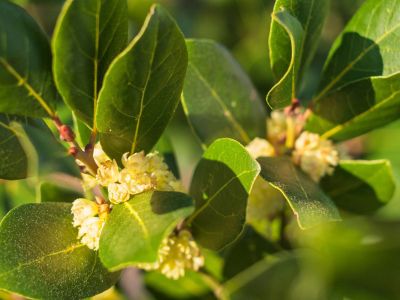Reasons for a Yellow Bay Laurel Plant
Bay Laurel is native to the Mediterranean region. A sweet bay leaf tree (Laurus nobilis) can grow 40 to 50 feet (12 to 15 m.) and is considered one of the oldest cultivated species of trees. If you’re noticing any yellow leaves on bay laurel plants that you may be growing, here are the most common causes.
Soil conditions
Bay laurel trees demand well-draining soil. If their roots get waterlogged, they will easily develop root rot, which can turn the leaves yellow and cause the plant to become droopy. If you think your bay laurel has been overwatered, you may be able to save it. Transplant or repot the tree, trimming away any diseased roots, and remove all the affected parts of the plant. Replant it in fresh, well-draining soil and water only when the top layer of soil is dry. Wet roots are often the underlying cause of a yellow bay laurel plant.
Pests
If your bay laurel has yellow leaves, it could mean it’s being visited by an insect called a bay sucker. Bay suckers are tiny brown bugs that resemble aphids. They feast on the tree’s sap in late spring months and lay their eggs on the undersides of the leaves. The eggs hatch into white, fuzzy looking larvae. If the tree isn’t treated, the leaves will become thick, turn brown, and fall off. If you see the leaves on your bay laurel turning yellow, check the undersides of the leaves. If you see signs of bay suckers or their eggs, treat the plant’s leaves and stems immediately with insecticidal soap and check occasionally to be sure you got them all. All infected leaves and stems should be removed and completely disposed of.
Nutrition
Yellowing bay leaves can be a sign of a nutrient deficiency. Iron chlorosis can develop when your soil is too alkaline or if there is root damage. With this problem, you may see your bay leaves begin to turn yellow at the edges first, while the veins remain green. You can correct the pH with sulfur or peat moss. Again, be sure the tree has good drainage. A lack of nitrogen can also create a pH imbalance. Low nitrogen will bring on a uniform yellowing of your bay laurel’s leaves, beginning with the older lower leaves and moving up the tree. You can fix this by feeding it with some good organic compost or with a dose of nitrogen-rich fertilizer. Be sure to follow directions when using fertilizer.
Random Yellowing
The good news is that bay laurel leaves sometimes turn yellow simply due to the age of the plant. Bay laurels are also known to shed a few leaves at random for no obvious reason and the condition may be completely harmless. Just remove the yellow leaves, make sure the area around the plant stays tidy, and give it a bit of fertilizer.
